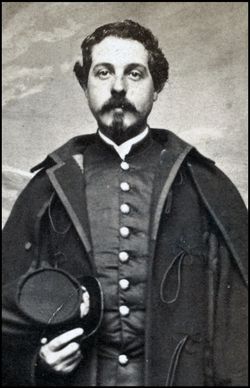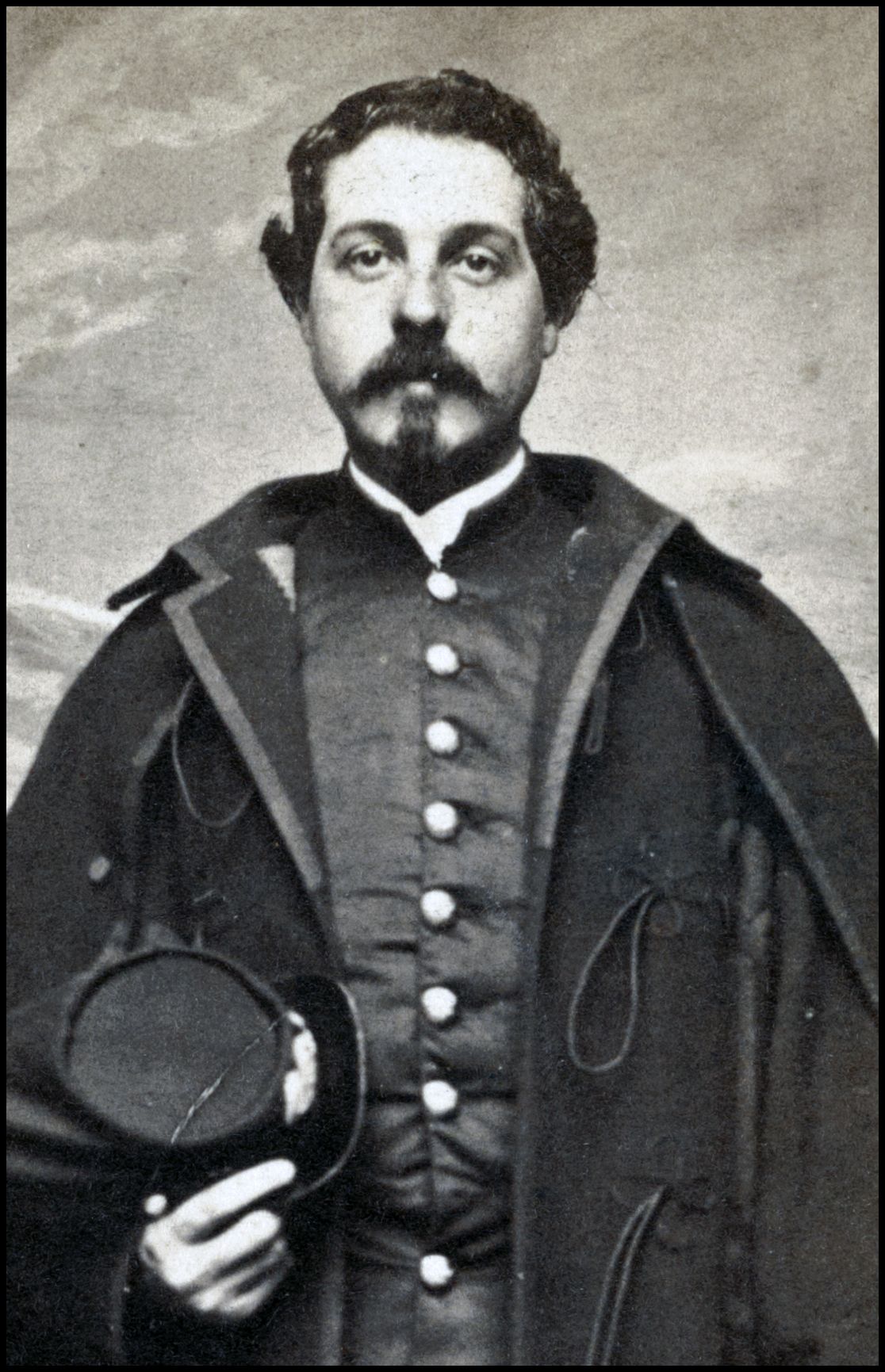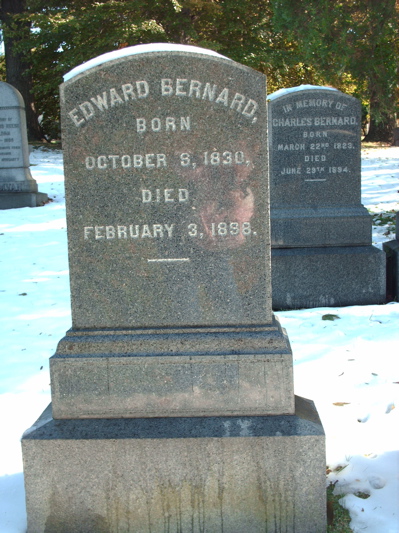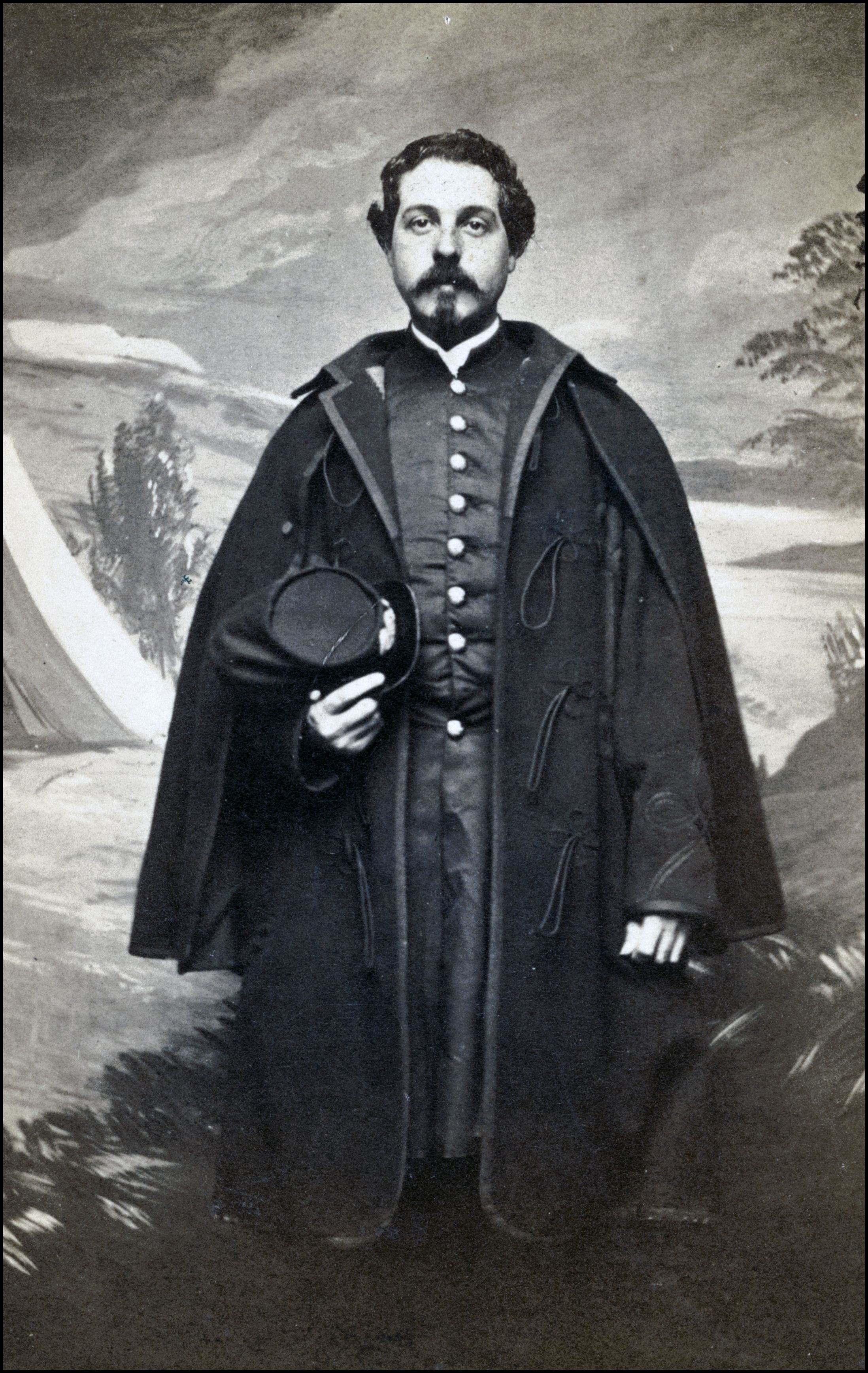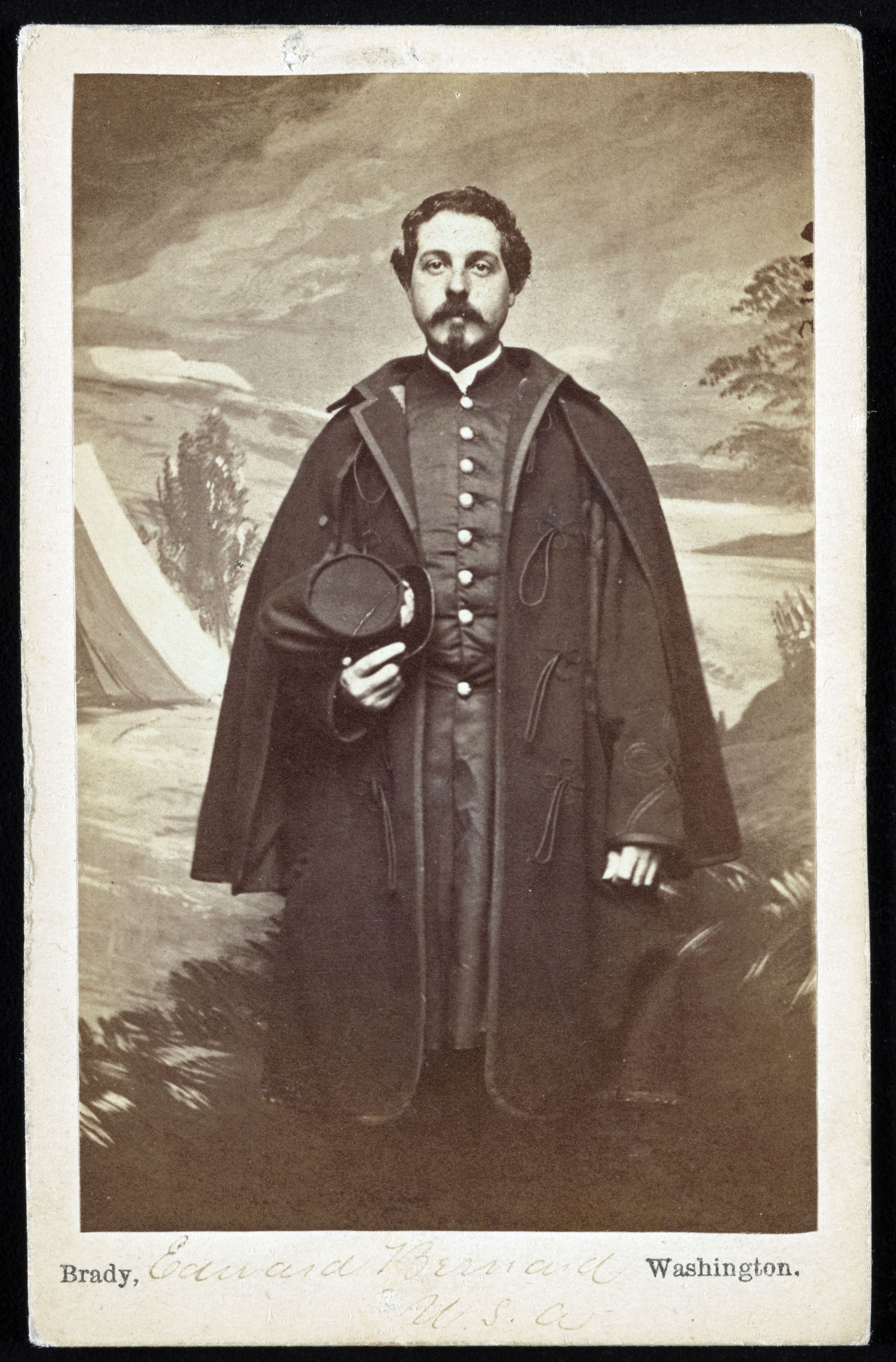"Case 691. — Captain E. Bernard, Co. I, 65th New York, aged 29 years, received a gunshot wound through the left leg just below the knee, fracturing the tibia and fibula, at Malvern Hill, July 1, 1862. He was conveyed to Harrison's Landing, and thence by steamer to Fort Monroe. From there he proceeded to his home in New York City, where he obtained the professional attendance of Dr. L. A. Sayre, who subsequently furnished the following report of the case: "I was called to see Captain Bernard on July 12th, when he had just arrived from Fort Monroe, and was supposed to be in a dying condition from septicaemia. Many surgeons who had seen him at Harrison's Landing and Fort Monroe had all advised amputation of the wounded limb. The leg had become about two and a half inches shorter than the other and very much twisted on its axis. Extensive suppuration extended up the thigh and down the leg, both openings having been hermetically sealed with closely packed lint, which, when soaked off, caused the escape of a greater amount of imprisoned pus than I have ever seen from a single wound. Mingled in the pus there was also a large quantity of very finely broken up and macerated bone, and over the tubercle of the tibia a loose fragment was detected which, when cut down upon, escaped, having the appearance of a polished metal, like a silver sixpence, and the shape of a hollow segment of a robin's egg. This fragment, which, before extracting, I had suspected to be a loose piece of bone, the patient declared to be 'the end of an explosive ball.' His thigh at this time was so infiltrated with pus as to make amputation hazardous. I therefore made free incisions for its escape and drainage, and treated the limb by extension and plaster-of-paris, using adhesive plaster, weight and pulley over the foot of the bed, which was elevated to make the body act as a counter-extending force. Several large fragments of bone, having been macerated in the pus so long, were subsequently easily picked out without removing the periosteum. He made a very satisfactory recovery with but very little shortening, although there must have been more than an inch of entire bone removed. There is still (1874) a small piece of dead bone remaining, which, however, gives no trouble as long as he wears the tent to keep up the drainage. Whenever he leaves this out and the wound closes, he becomes sick until the discharge again takes place. I have been anxious to remove the diseased part, but he can never find time for that purpose, having to work constantly for his living and being too poor to lay up for the operation." The New York City Examining Board, on October 1, 1877, reported the sinus leading to dead bone as still open, having never ceased to discharge, and requiring constant dressing. Captain Bernard obtained his discharge from service October 22, 1863, and has since become a pensioner. He was paid September 4, 1880." -- The Medical and Surgical History of the War of the Rebellion. Part III, Volume II. (3rd Surgical volume) by U.S. Army Surgeon General's Office.
"Case 691. — Captain E. Bernard, Co. I, 65th New York, aged 29 years, received a gunshot wound through the left leg just below the knee, fracturing the tibia and fibula, at Malvern Hill, July 1, 1862. He was conveyed to Harrison's Landing, and thence by steamer to Fort Monroe. From there he proceeded to his home in New York City, where he obtained the professional attendance of Dr. L. A. Sayre, who subsequently furnished the following report of the case: "I was called to see Captain Bernard on July 12th, when he had just arrived from Fort Monroe, and was supposed to be in a dying condition from septicaemia. Many surgeons who had seen him at Harrison's Landing and Fort Monroe had all advised amputation of the wounded limb. The leg had become about two and a half inches shorter than the other and very much twisted on its axis. Extensive suppuration extended up the thigh and down the leg, both openings having been hermetically sealed with closely packed lint, which, when soaked off, caused the escape of a greater amount of imprisoned pus than I have ever seen from a single wound. Mingled in the pus there was also a large quantity of very finely broken up and macerated bone, and over the tubercle of the tibia a loose fragment was detected which, when cut down upon, escaped, having the appearance of a polished metal, like a silver sixpence, and the shape of a hollow segment of a robin's egg. This fragment, which, before extracting, I had suspected to be a loose piece of bone, the patient declared to be 'the end of an explosive ball.' His thigh at this time was so infiltrated with pus as to make amputation hazardous. I therefore made free incisions for its escape and drainage, and treated the limb by extension and plaster-of-paris, using adhesive plaster, weight and pulley over the foot of the bed, which was elevated to make the body act as a counter-extending force. Several large fragments of bone, having been macerated in the pus so long, were subsequently easily picked out without removing the periosteum. He made a very satisfactory recovery with but very little shortening, although there must have been more than an inch of entire bone removed. There is still (1874) a small piece of dead bone remaining, which, however, gives no trouble as long as he wears the tent to keep up the drainage. Whenever he leaves this out and the wound closes, he becomes sick until the discharge again takes place. I have been anxious to remove the diseased part, but he can never find time for that purpose, having to work constantly for his living and being too poor to lay up for the operation." The New York City Examining Board, on October 1, 1877, reported the sinus leading to dead bone as still open, having never ceased to discharge, and requiring constant dressing. Captain Bernard obtained his discharge from service October 22, 1863, and has since become a pensioner. He was paid September 4, 1880." -- The Medical and Surgical History of the War of the Rebellion. Part III, Volume II. (3rd Surgical volume) by U.S. Army Surgeon General's Office.
Advertisement
Explore more
Sponsored by Ancestry
Advertisement
